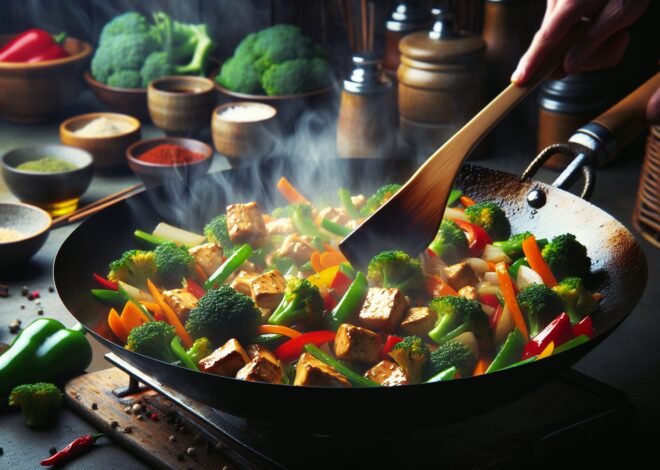
Best Oven Temperatures for Cooking Meat and Poultry
Achieving perfectly cooked meat and poultry is all about finding the right oven temperature. When it comes to cooking chicken, turkey, or a succulent roast, even a small temperature adjustment can make a difference between juicy, tender results and dry, overcooked meat. This guide will walk you through the best oven temperatures and techniques to elevate your meals every time.
Ideal Temperatures for Different Meats
Cooking meat to the right temperature is key to both safety and flavor. Each type of meat has an optimal temperature range that ensures it’s neither undercooked nor overcooked. Understanding these temperatures can transform your cooking from good to great.
Poultry (chicken, turkey)
Poultry requires careful attention to temperature to ensure safety and taste. Chicken and turkey should reach an internal temperature of 165°F (74°C). This ensures that harmful bacteria are eliminated, making it safe for consumption. Use a meat thermometer to check the thickest part of the meat, usually the breast or thigh.
When roasting a whole bird, consider the carryover cooking effect. Remove the poultry from the oven when it reaches about 160°F (71°C), and let it rest. The temperature will continue to rise, reaching the desired level. This technique, along with basting, will keep the meat juicy and tender.
For those who prefer dark meat, you might aim for a slightly higher temperature, around 175°F (79°C). This breaks down the connective tissues in legs and thighs, resulting in a more tender texture. Always let your poultry rest for at least 10 minutes before carving to allow the juices to redistribute throughout the meat.
Beef and pork
Beef and pork have slightly different temperature targets depending on the cut and your personal taste. For beef, whether you’re cooking a steak or a roast, aim for the following temperatures:
- Rare: 120-130°F (49-54°C)
- Medium Rare: 130-135°F (54-57°C)
- Medium: 135-145°F (57-63°C)
- Medium Well: 145-155°F (63-68°C)
- Well Done: 155°F (68°C) and above
Pork, on the other hand, should reach a minimum of 145°F (63°C) for safe consumption. This applies to pork chops, roasts, and tenderloins. Allow the meat to rest for about three minutes before serving. This resting time is crucial as it allows the meat fibers to reabsorb juices, enhancing the flavor and tenderness.
Fish and seafood
Fish and seafood are delicate and require a gentle approach to ensure perfection. The general guideline is to cook fish to an internal temperature of 145°F (63°C). At this temperature, the fish will turn opaque and easily flake with a fork.
Different types of seafood, such as shrimp and scallops, should be cooked until they turn opaque or reach a firm texture. For shrimp, a slight curl and a pink hue indicate they are ready. Scallops should be opaque and firm to the touch.
Avoid overcooking fish, as it leads to a dry, unappetizing texture. Instead, aim for moist, flavorful seafood dishes by monitoring the cooking time and temperature closely. Use a thermometer to get precise results, ensuring your seafood dishes are both delicious and safe.
Techniques for Juicy, Tender Meat
Achieving juicy, tender meat is not just about cooking times and temperatures. It involves mastering a few key techniques that can elevate your dishes to restaurant-quality. These methods ensure that the flavors are locked in and the texture is perfect.
Resting time and carryover cooking
Resting time is one of the simplest yet most effective techniques for tender meat. After removing meat from heat, allow it to rest for several minutes. This pause lets the juices redistribute throughout the meat, enhancing flavor and tenderness.
Carryover cooking is another important concept. Even after removing meat from the oven or grill, the internal temperature continues to rise. This is due to residual heat. For example, a roast removed at 135°F (57°C) might reach 145°F (63°C) during the rest period.
The length of the resting time varies with meat size. Smaller cuts like steaks may rest for five minutes, while larger roasts could need 15-20 minutes. Resting also helps to retain moisture, preventing the meat from drying out when sliced.
Using a meat thermometer
A meat thermometer is an invaluable tool for ensuring perfectly cooked meat. It provides an accurate reading of the internal temperature, taking the guesswork out of cooking.
Insert the thermometer into the thickest part of the meat, avoiding bones and fat for the most accurate reading. For roasts and whole poultry, it’s best to check multiple spots to ensure even cooking.
Digital thermometers offer quick readings and often include alerts for specific temperatures, making them a convenient choice. Regularly calibrate your thermometer for accuracy. This small investment in time ensures that your meat dishes are cooked to perfection every time.
Searing before roasting
Searing meat before roasting is a technique that enhances both flavor and texture. The high heat caramelizes the surface, creating a delicious crust while sealing in juices.
To sear meat, heat a heavy pan over high heat until smoking hot. Add a small amount of oil, then place the meat in the pan. Sear each side for 2-3 minutes until a golden-brown crust forms.
After searing, transfer the meat to an oven to finish cooking. This method works beautifully for roasts and larger cuts of meat. Searing not only improves flavor but also creates an appealing visual presentation, making your dishes irresistible.
Common Mistakes and How to Avoid Them
Even seasoned cooks can fall into common traps when preparing meat. Understanding these pitfalls and how to avoid them can make all the difference in your culinary efforts.
Overcooking or undercooking
Overcooking leads to tough, dry meat, while undercooking can result in unsafe dishes. Both outcomes are easily avoided by monitoring cooking times and temperatures closely.
For poultry, reaching an internal temperature of 165°F (74°C) is essential. For beef and pork, the range depends on personal preference, with each level offering a different texture and flavor.
Fish and seafood require careful attention, as they cook quickly. Using a meat thermometer is the best way to ensure your meat is cooked to perfection. Check several points in large cuts to avoid uneven cooking.
Not preheating the oven
Preheating the oven is a crucial step that ensures even cooking. Placing meat in a cold oven increases cooking time and can lead to uneven results.
Before starting, set the oven to the desired temperature and allow it to fully preheat. This step helps to create a consistent cooking environment, ensuring your meat is perfectly cooked throughout.
An oven thermometer can verify that your oven reaches the correct temperature. This tool is particularly useful in older ovens that may not heat evenly or accurately.
Adjusting temperature for large cuts
Large cuts of meat, like whole turkeys or roasts, require specific temperature adjustments to cook evenly. Cooking these cuts at too high a temperature can result in a burnt exterior and undercooked interior.
Start by cooking at a lower temperature, allowing the heat to penetrate the entire cut. This ensures the meat cooks evenly from edge to center.
For a crispy exterior, consider increasing the temperature during the last few minutes of cooking. This technique provides a golden-brown finish without sacrificing the inner tenderness.
Mastering these techniques and avoiding common mistakes can transform your meat dishes. By focusing on temperature, technique, and timing, your meals will consistently impress. With practice, these skills become second nature, turning every meal into a masterpiece.
Conclusion
Cooking meat and poultry to perfection is a matter of using the right temperature to retain juiciness and tenderness. Different cuts and types of meat benefit from specific temperature settings—poultry often cooks best at slightly higher temperatures to ensure thorough cooking, while red meats can remain tender at lower settings. Using a meat thermometer ensures accuracy, reducing the risk of overcooking or undercooking. Allowing meat to rest after cooking also contributes to juiciness, as the juices redistribute. Applying these temperature techniques will elevate your cooking of meat and poultry every time.
FAQ
What temperature is best for chicken?
To achieve juicy and safe-to-eat chicken, cook it to an internal temperature of 165°F (75°C). This ensures the meat is cooked through while maintaining its tenderness.
How do I check meat doneness?
Use a meat thermometer for accurate results. Insert it into the thickest part of the meat, ensuring it doesn’t touch bone or fat. This method guarantees precise readings.
Does meat continue cooking after it’s out of the oven?
Yes, meat continues to cook due to residual heat. This process is called carryover cooking and can raise the temperature by 5°F to 10°F. Allow meat to rest for a few minutes to reach optimal doneness.
What’s the best temperature for rare beef?
For rare beef, aim for an internal temperature of 125°F (52°C). This gives the meat a bright red center and a tender texture.
How can I prevent dry poultry?
Preventing dry poultry involves not overcooking and using techniques like brining or marinating. These methods add moisture and enhance flavor, keeping the meat succulent.
Should I use a thermometer for roasting?
Using a thermometer during roasting ensures perfect results. It provides precise internal temperature readings, helping avoid undercooked or overcooked meat.











